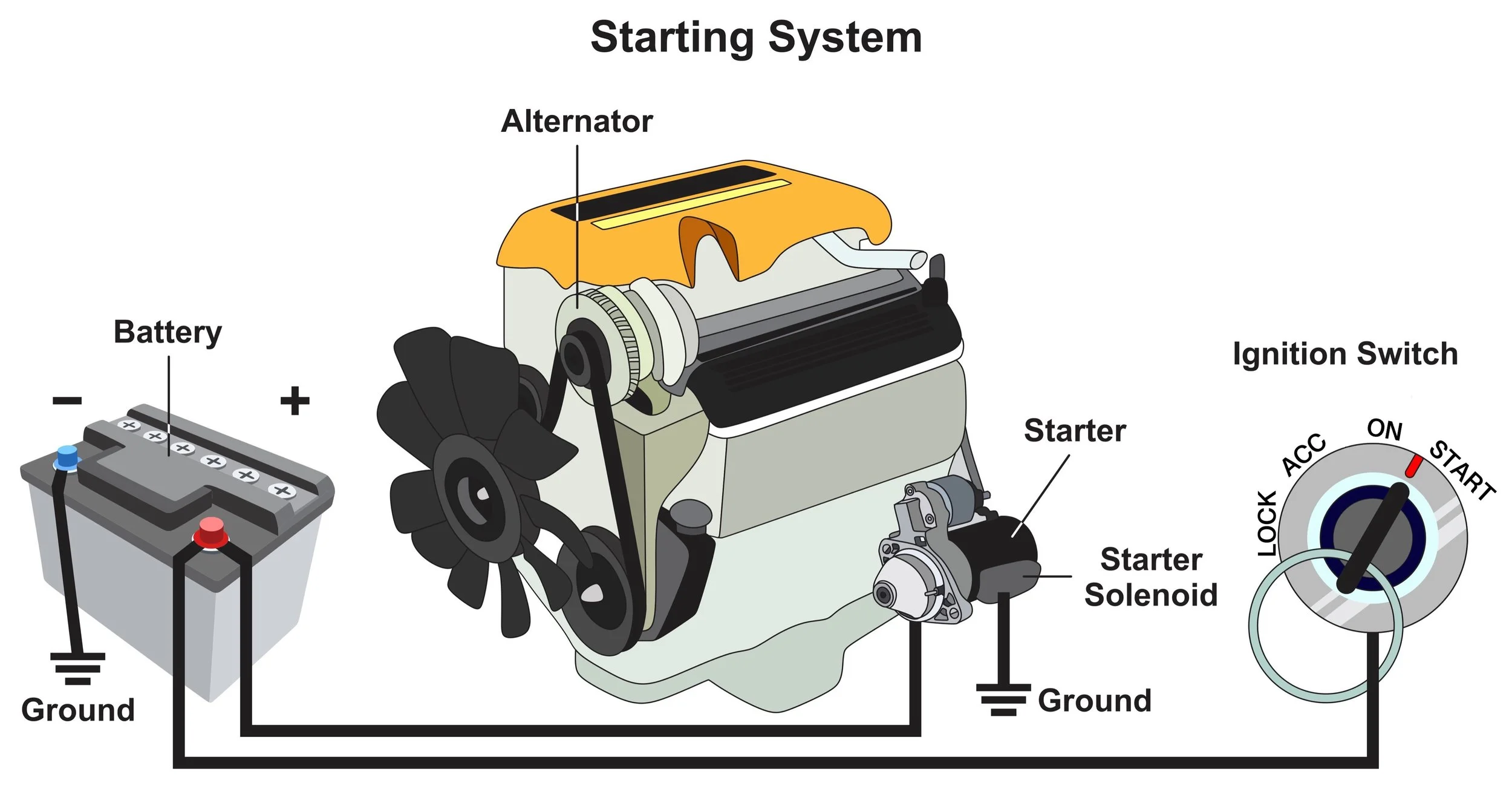HOW TO TEST AN ALTERNATOR
Before we dive in, it’s important to note that if your car has smart charging, this test won’t apply to you.
What’s the purpose of the alternator?
The purpose of the alternator is to charge the battery and run electrical components in your car. In order for this to happen, your car has to be on.
battery test
Before we can test an alternator, we have to test the battery first to ensure it’s not faulty. If the battery is faulty, the alternator test won’t be valid. You also want to inspect the battery terminals to ensure there’s no corrosion as it can cause unwanted resistance and reduce voltage. If you find corrosion on the terminals, make sure to clean them. If everything looks good, you can start the battery test.
Set your multimeter to 20 volts on the DC section.
Connect the red lead to the positive side of the battery and the black lead to the negative side of the battery.
The voltage reading should be around 12.6 volts. It’s ok if the reading is a bit higher or lower than that. If it measures 10 volts, it could mean that one of the cells inside the battery is damaged, and the battery needs to be replaced. You can also check the expiration date on your battery. If the date is approaching and your voltage reading is low, it may be time for a new battery.
The next step is to test the cold cranking amps on the battery. You want to leave the leads connected and have someone turn on the car. The battery voltage should not drop below 10 volts when cranking. If it does, your battery could be going out.
Once you verify the battery is good, make sure there’s no corrosion or loose connections that are part of the charging system. For example, check the battery terminals and connections at the alternator, as these can prevent the system from working properly. In addition, make sure to check the alternator fuse is not blown, as most people tend to overlook this.
alternator test
If the battery in your vehicle passed the test, now we can proceed to test the alternator.
With the car on, rev the RPMs to 2000 and look at the voltage reading. On most cars, it should be between 13.5 volts and 15 volts. So if your car is around that range, that’s a good sign. If you want to make sure, it’s best to look into your car’s repair manual.
Add a load or in other words, turn on as many electrical accessories as you possibly can. For example the AC, high-beam headlights, radio, emergency lights, etc.
After you do this, the multimeter reading should not go below 13.5 volts. And if it does, your alternator could be dying out. Make sure to check the serpentine belt isn’t loose, as this can cause the same result.
On the other hand, if the voltage is above 15 volts, it means your alternator is overcharging your battery and you should get it fixed right away. This could be caused by a bad voltage regulator.
Check out my YouTube video!
Disclaimer: Some links in this article may be affiliate links.


